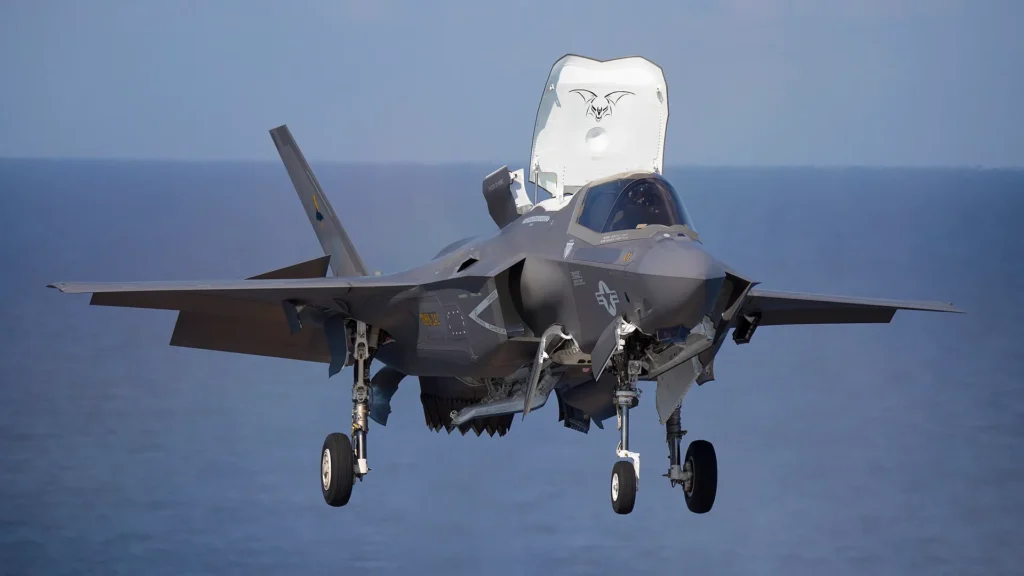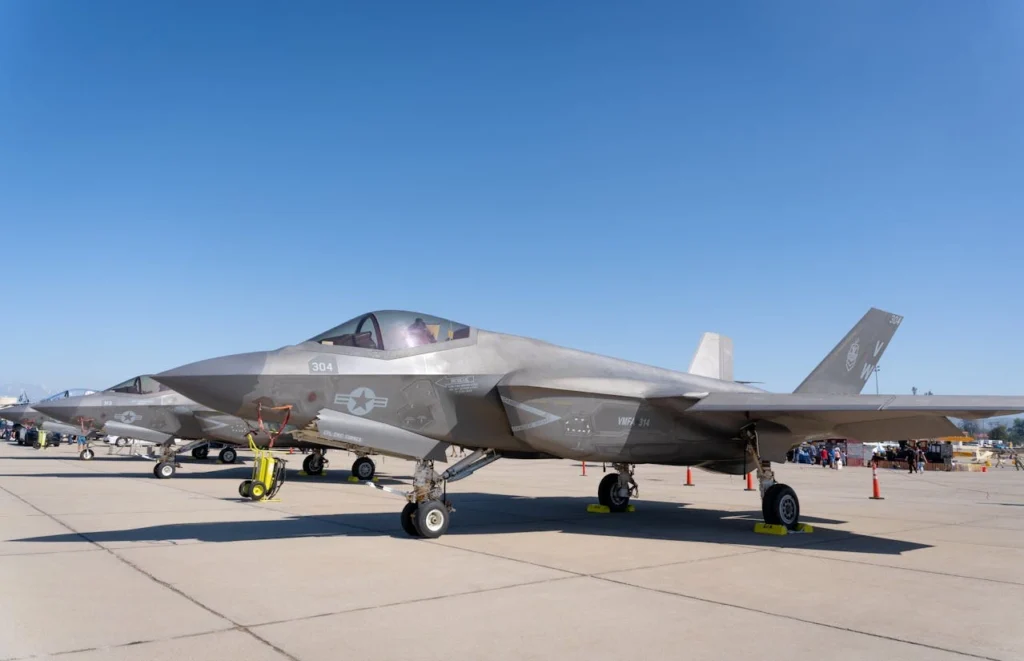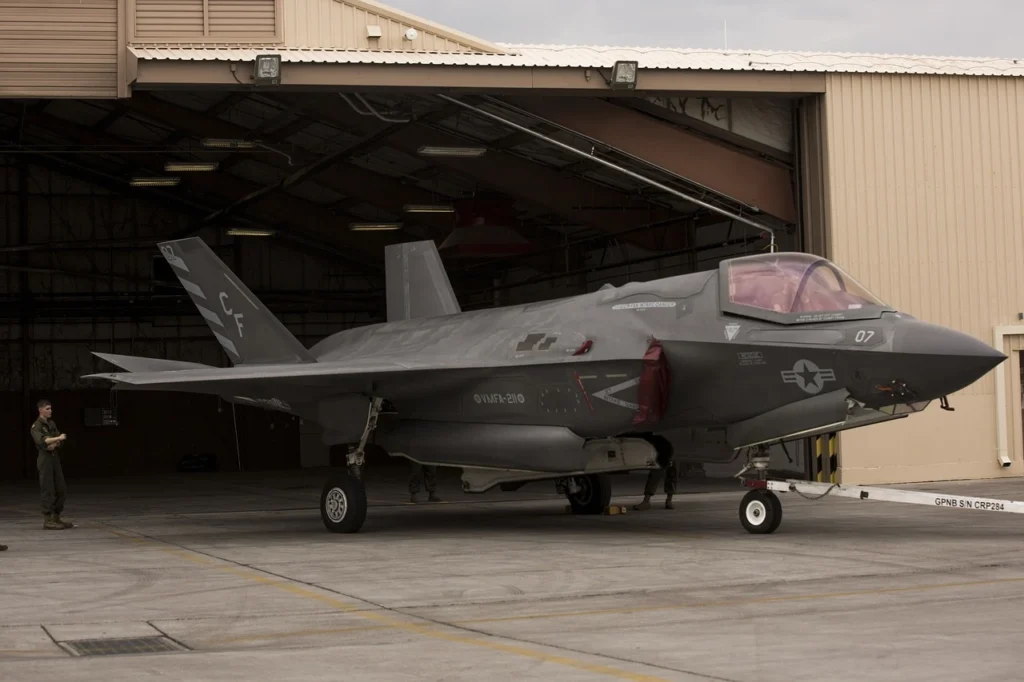
LONDON– A British F-35B Lightning II fighter jet made an emergency landing at Kagoshima Airport (KOJ) in southwestern Japan after a reported malfunction, Kyodo News confirmed. The incident occurred on Sunday, temporarily disrupting several commercial flights at the airport.
The runway at Kagoshima was closed for about 20 minutes around 1:30 am local time. No injuries were reported. The landing took place during ongoing joint drills between British forces, Japan’s Maritime Self-Defense Force, and United States forces that began on August 4.
 F-35 Lightning II; Photo- Wikipedia
F-35 Lightning II; Photo- WikipediaBritish F-35B Emergency Landing
Airport officials confirmed that the arrival of the British F-35B prompted delays to both departures and arrivals, with multiple flights affected before operations resumed.
The aircraft, part of the Royal Navy’s contingent in the Indo-Pacific, was diverted to Kagoshima due to an onboard malfunction.
This marks the second emergency landing involving a British F-35B in less than two months. On June 14, another Royal Navy F-35B was diverted to Thiruvananthapuram Airport (TRV) in Kerala, India, after a midair emergency.
That incident was linked to a hydraulic failure, affecting landing gear, brakes, and control surfaces. The jet, diverted from HMS Prince of Wales, remained grounded for weeks until British engineers completed repairs.
Previous Incident in India
The June diversion drew public attention after the aircraft remained in Kerala for an extended period, sparking social media discussions and memes. The F-35B eventually returned to service after significant engineering work.
Built by Lockheed Martin, the F-35B is one of the world’s most advanced stealth fighters, capable of short take-offs and vertical landings. Each unit costs over $115 million, with the aircraft designed for multi-role combat missions.
Spain Rules Out F-35 Purchase
Separately, Reuters reported that Spain has dropped plans to purchase U.S.-made F-35 fighter jets.
The Spanish Ministry of Defence confirmed it will instead focus on European-made platforms, including the Eurofighter and the Future Combat Air System (FCAS).
Spain had initially earmarked €6.25 billion in its 2023 budget for new fighter aircraft. However, an additional €10.5 billion allocation for defence spending this year is now being directed toward European projects, making the F-35 acquisition unfeasible.
 Photo: By Soly Moses: https://www.pexels.com/photo/f-35-fighters-on-the-tarmac-at-an-air-show-18119106/
Photo: By Soly Moses: https://www.pexels.com/photo/f-35-fighters-on-the-tarmac-at-an-air-show-18119106/About the F-35 Fighter Jet
The F-35B, developed by Lockheed Martin and operated by the United States Marine Corps (MCAS Yuma – NYL), United Kingdom Royal Navy and RAF (RAF Marham – KNF), and Italian Air Force (Amendola Air Base – QAO), is the world’s first supersonic short takeoff and vertical landing (STOVL) stealth fighter.
Designed for deployment from forward operating bases and ships without catapult systems, the F-35B provides unmatched flexibility in allied operations. It has proven itself across the U.S., UK, and Italy in both training and combat missions.
The F-35B is the STOVL variant of the Joint Strike Fighter program, enabling takeoff from short runways and vertical landing on compact decks, such as those of amphibious assault ships. This capability ensures rapid deployment in regions where conventional airfields are unavailable or at risk.
Its propulsion system is powered by the Pratt & Whitney F135 engine, paired with a swiveling exhaust nozzle. Even with a full internal weapons load, the aircraft can reach Mach 1.6 without compromising stealth by carrying ordnance externally. Its low observability is maintained through radar-absorbing materials, precisely aligned surfaces, and internal weapon bays.
The F-35B’s stealth is further reinforced with advanced electronic warfare systems and multi-spectral sensors, allowing it to evade detection while delivering precision strikes in contested environments.
Sensor Integration and Networked Warfare
Equipped with the AN/APG-81 AESA radar, Distributed Aperture System (DAS), and Electro-Optical Targeting System (EOTS), the F-35B fuses sensor data into a unified operational picture. Pilots receive this information via a helmet-mounted display, which integrates threat detection, targeting cues, and night vision into a single, real-time view.
Beyond its own mission profile, the F-35B functions as a network node, sharing data with other aircraft, ground forces, naval assets, and unmanned systems. This networked approach improves coordination, situational awareness, and operational lethality in joint operations.
Combat Experience and Modernization
The F-35B has demonstrated combat effectiveness in Middle East operations. Its ability to operate from smaller carriers, such as the UK’s HMS Queen Elizabeth, and from remote or austere runways, makes it a critical asset for NATO and allied forces.
The aircraft’s open-architecture software allows for rapid upgrades. Current modernization efforts include extending sensor range, enhancing electronic warfare capability, and integrating next-generation weapon systems.
 Photo: Needpix.com
Photo: Needpix.comGlobal Operators and Deployment Flexibility
The F-35B is currently in service with:
- United States Marine Corps – MCAS Iwakuni (RJOI), MCAS Yuma (NYL)
- United Kingdom Royal Navy & RAF – RAF Marham (KNF), HMS Queen Elizabeth
- Italian Air Force & Navy – Amendola Air Base (QAO)
Its compact footprint allows takeoff from forward landing strips, small islands, or amphibious ships, making it indispensable for expeditionary and high-intensity missions.
Stay tuned with us. Further, follow us on social media for the latest updates.
Join us on Telegram Group for the Latest Aviation Updates. Subsequently, follow us on Google News
British F-35 Fighter Jet Pilot Makes Emergency Landing in India, Why?
The post British F-35B Fighter Jet Makes Emergency Landing at Japan’s Airport appeared first on Aviation A2Z.






